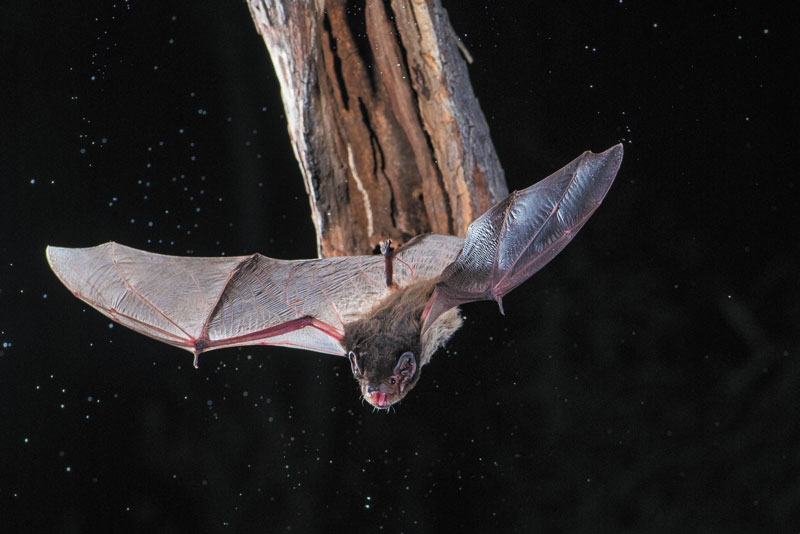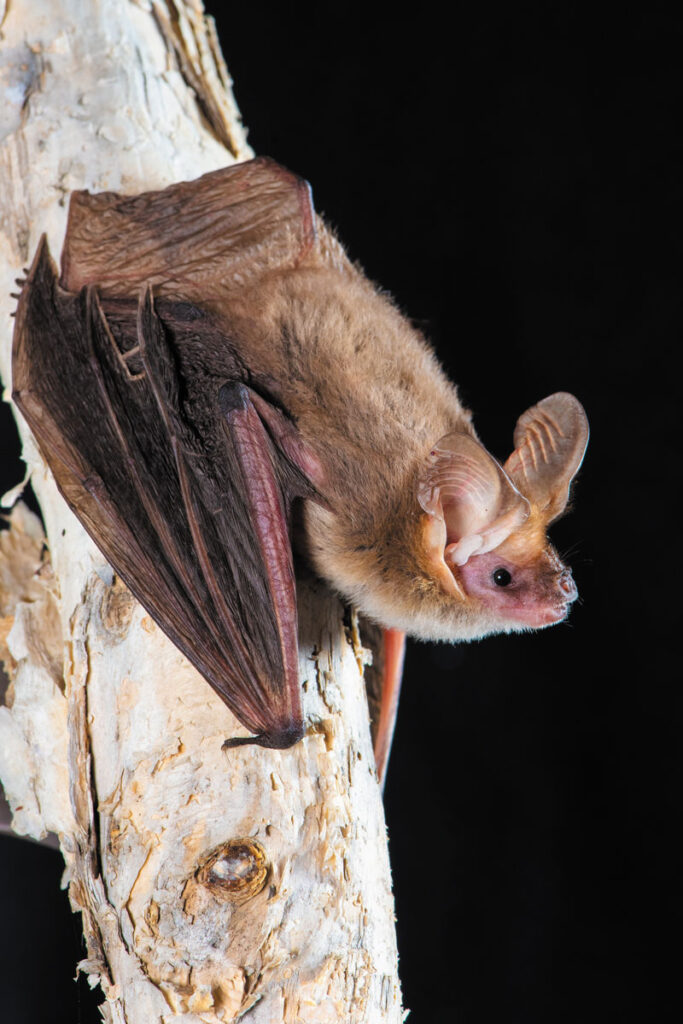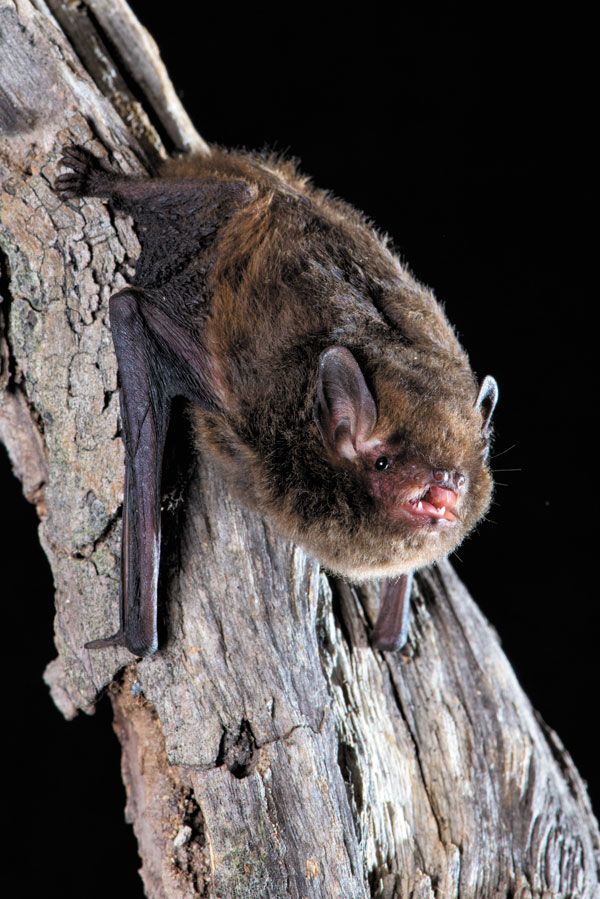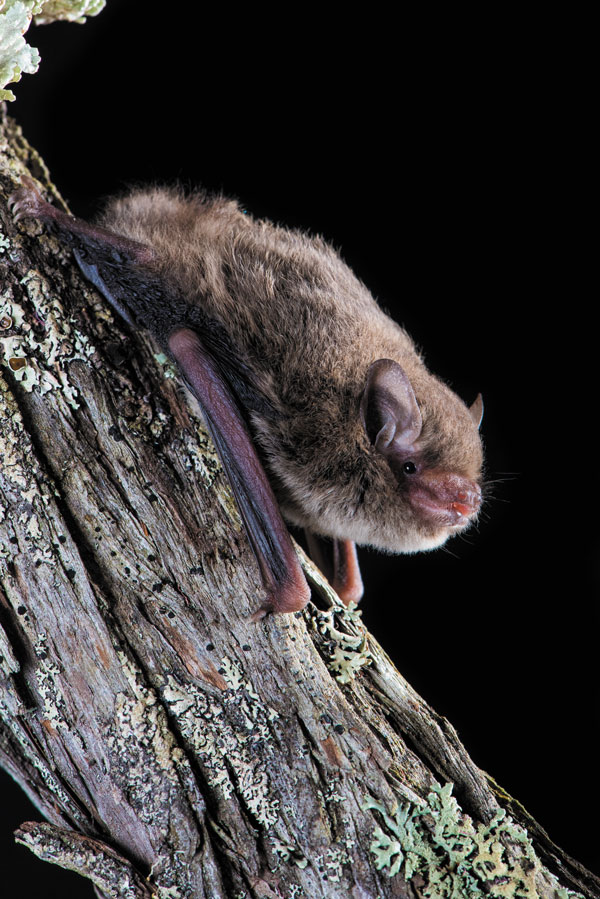There are around 13 species of microbats across the Bellarine. All bats are protected wildlife and use our gardens for food, water and shelter. Flying uses lots of energy, so bats have a huge appetite. A garden with lots of insects is good for bats. Bats are active at night feeding on moths, grasshoppers, cockroaches, bugs, mosquitos and plenty of other insects. Bats eat up to three quarters their body weight a night. Some bats are said to catch up to 600 mosquitos in one hour. Bats use echolocation; make noises and wait for the sound to bounce back; an echo people cannot generally hear. The echos provide a clear picture of the environment guiding the bat around obstacles and help it find and catch insects.
Tips for designing a bat friendly garden
- Plant local grassland and woodland plants such as Tussock, Poa, Kangaroo and Wallaby grasses, Eucalyptus, Moonah, Tea-tree and Coast Beard-Heath.
- Keep old trees on your property.
- Weeds destroy feeding opportunities and roosting sites for bats.
- Install an artificial bat box.
- Be patient, it may take up to 4 years for bats to move into the new box.
Did you know?
- Bats are the only mammal that can fly.
- Their wings are modified hands.
- A bats heart rate beats around 1000 beats per minute when it flies.
- A baby bat is called a pup and is born early summer when there are plenty of insects around.
- Bats go into hibernation during winter.
- Never wake a sleeping bat as it uses all of its fat reserves that it needs to get through the cold weather.
- Bat droppings (guano) is one of the richest fertilisers.
- Greatest threats are cats and pesticides.






Learn more about micro bats on the Bellarine and how to plant a bat friendly garden.




